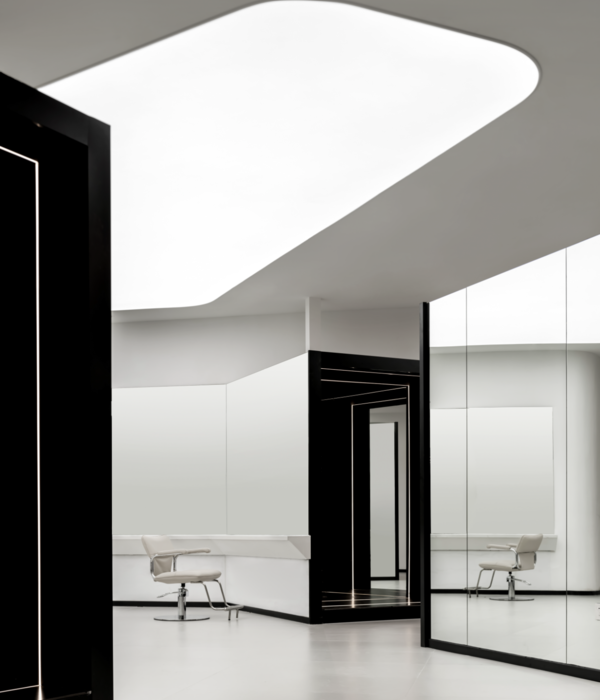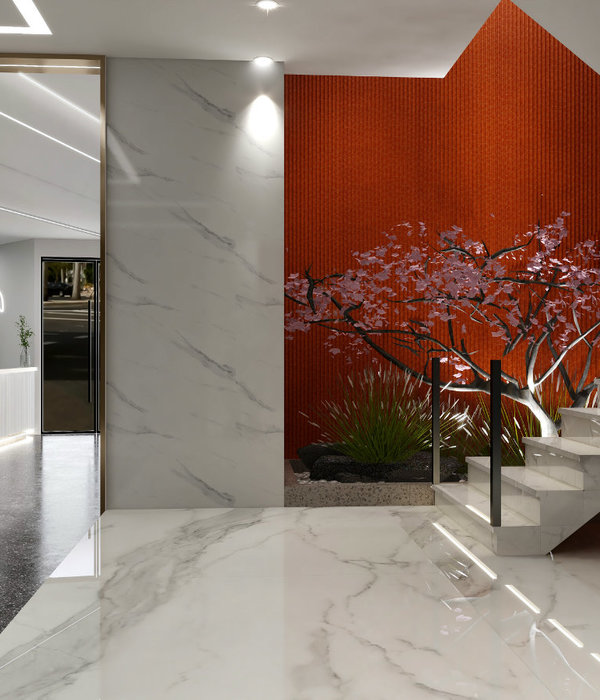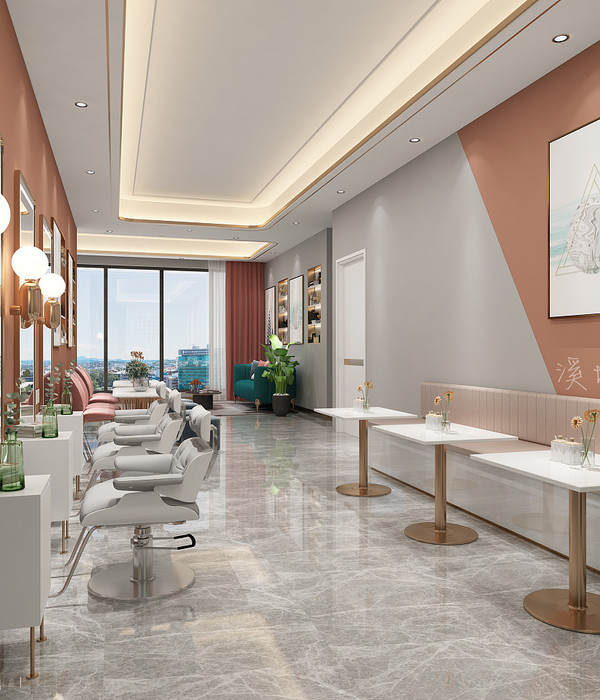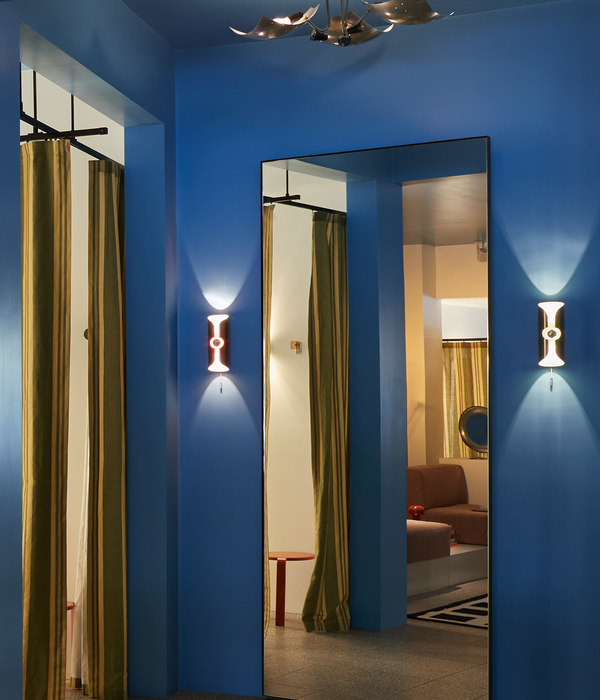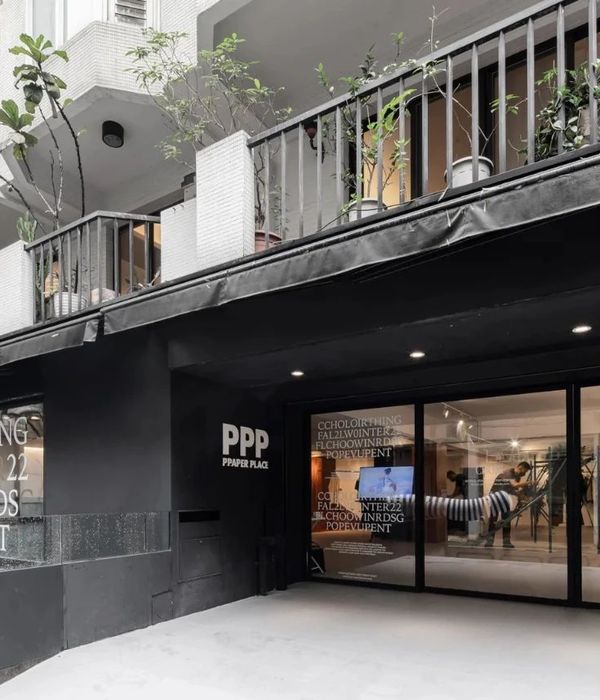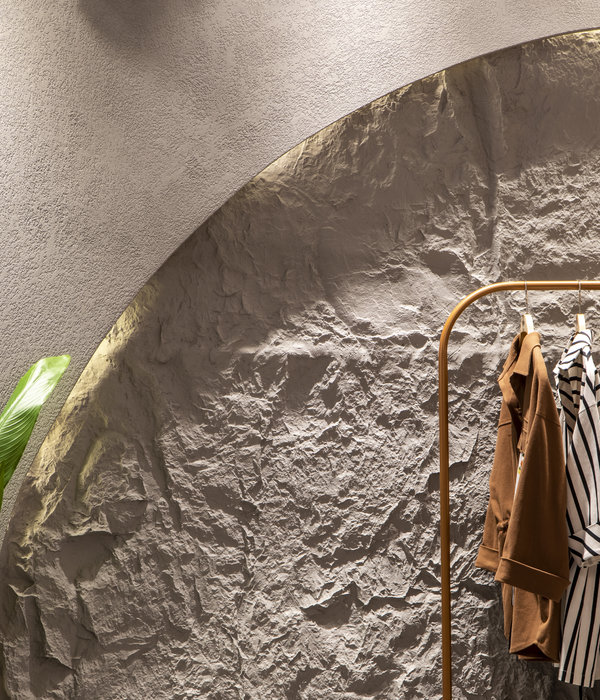Maison de la littérature (文学之家)位于历史悠久的老魁北克街区,这里也是位列联合国教科文组织世界遗产名录的区域。在极其稠密的城市环境中,Chevalier Morales为一座哥特式传统教堂Wesley Temple 设计了一个拥有简单精致体量的现代化附属建筑。Maison de la littérature向公众开放后立刻成为了老魁北克区域内充满活力的魁北克文学殿堂和热门旅游景点。
The Maison de la littérature (House of Literature) is located in the historic neighbourhood of Old Québec, a site part of UNESCO’s World Heritage List. In this particularly dense urban setting, Chevalier Morales designed a contemporary annex, a simple and refined volume, to the Wesley Temple, a neo-Gothic heritage church. Since its opening, the Maison de la littérature has rapidly become a vibrant home to Québec literature and a popular touristic destination in Old Québec.
▼哥特式教堂的现代附属建筑外观,exterior view of a contemporary annex to the Wesley Temple
Chevalier Morales在竞赛中提交的获胜项目呈现了一个出人意料的解决方案,超出了最初任务的预期。建筑师选择将一部分功能移到教堂之外的新附属建筑中,提供一个更加通透和公共的入口。这一策略也能够帮助建筑师对Wesley Temple进行清理,保护和恢复原有整体空间结构。除了图书馆空间,Maison de la littérature独特而创新方案还包括一个音乐厅/演讲厅、一个咖啡厅、一个临时展览空间、一个永久展览空间、一间常驻作家公寓和几间创作工作室、一个放映室、一间教室和一间多媒体工作室。建于1848年的Wesley Temple于1931年关闭,在1944年改造为Institut Canadien的一个公共图书馆和音乐演讲厅,音乐演讲厅于1999年停止向公众开放。新的Maison de la littérature为Institut Canadien提供了履行其使命的机会,同时保护了魁北克地区最古老的公共图书馆之一。
Stemming from an architecture competition, the winning project by Chevalier Morales proposed an unforeseen solution, a response exceeding the initial commission’s expectations. The architects chose to move part of the program into a new annex outside the church space to provide a more transparent and universal entrance.This strategy also helped declutter Wesley Temple, allowing the architects to preserve and restore the original spatiality of the overall structure. Along with the library spaces, the Maison de la littérature’s unique and innovative program also includes a concert/lecture hall, a café, a temporary exhibition space, a permanent exhibition, a resident writer’s apartment, creation studios, a projection room, a classroom as well as a multimedia studio. The Wesley Temple, built in 1848, was closed in 1931 and was transformed in 1944 into a public library and a concert and lecture hall for the Institut Canadien. The latter was closed to the public in 1999. The new Maison de la littérature offered to the Institut the opportunity to pursue its mission, while remaining one of the oldest public libraries in the province of Québec.
▼设计图解,diagram
新附属建筑物一定程度上的透明感和具有奇异熟悉感的外形为魁北克Institut Canadien带来了一种开放的现代感,主入口从与St-Stanislas街相交的倾斜Chaussée des Écossais底部自然而然地引导人们进入室内。立面外壳由玻璃板和底部的穿孔黄铜板构成,形成有趣的浅浮雕形象。此外,玻璃构件反射周围环境,在不模仿周边建筑的同时小心翼翼地将自己融入到老魁北克悠久的城市环境中。
The partly transparent and strangely familiar shape of this new annex gives an open, contemporary feel to the Institut Canadien de Québec, the main entrance of which is now accessed naturally from the bottom of the sloping Chaussée des Écossais where it intersects with Rue St-Stanislas. The outer shell of the façade is made of glass panels with an underlayer of perforated brass sheets, which compose an intriguing bas-relief. Furthermore, the glass annex reflects its surroundings, integrating itself carefully, without mimicry, into the historic urban context of Old Québec.
▼立面外壳由玻璃板和底部的穿孔黄铜板组成,形成有趣的浅浮雕形象,the outer shell of the façade is made of glass panels with an underlayer of perforated brass sheets, which compose an intriguing bas-relief
扩建建筑通过与原有教堂的辩证关系将Institut Canadien和它的电子书、Twitter发表的诗篇一同带入21世纪。建筑的上层容纳了创作空间,所有的机械设备空间位于新建建筑的地下室。将创作空间放置于教堂外部但又联系紧密的空间的想法,具有恰当的象征意义。附属建筑稍远处的河流和老城美丽景色呈现出一种更广阔的自由感。
This extension, which in its dialectic relationship with the original temple brings the institution fully into the 21st century with its e-books and Twitter poems, houses the main creative spaces in the upper levels. All the necessary mechanical spaces are also found in the basement of the new addition. The idea of putting the creative spaces outside the temple while maintaining a close connection to it seemed symbolically appropriate. Slightly detached, the annex’s impressive views of the river and the old city offer a greater sense of freedom.
▼建筑空间结构分析,spatial structure analysis
新附属建筑采用的介入式措施主要是为了呈现、补充和保护现有建筑的遗产价值。扩建部分成为重新利用遗产空间、避免改变现有建筑组成结构的有力象征。项目还包括对建筑石砌部分和英国哥特式教堂窗户的重要修缮工作。玻璃附属建筑以其高品质的材料、通透性、简洁的细节,建立了与现有石砌建筑物理上和形式上的对话。扩建建筑简洁和克制的外表不与相邻的历史细节、砖石工艺的丰富性与品质形成对抗。Maison de la littérature在老魁北克的历史街区中形成了一场过去与现在的对话。
The insertion approach used for the new annex is aimed primarily at showcasing, complementing and preserving the heritage value of the existing building. The extension emerges as a strong symbol of the redeveloped heritage space and avoids altering the architectural composition of the existing structure. The project also included a significant restoration component for the building’s masonry and English gothic church windows. The glass annex, with its high-quality materials, its transparency, and its detail simplicity, establishes a material and formal dialogue with the existing stone building. The extension’s simple and controlled skin does not compete with the richness and quality of the adjacent historic details and masonry assembly. The Maison de la littérature creates a dialogue between the past and present of the historic neighbourhood of Old Quebec City.
▼玻璃附属建筑以其高品质的材料、通透性、简洁的细节,建立了与现有石砌建筑物理上和形式上的对话,the glass annex, with its high-quality materials, its transparency and its detail simplicity, establishes a material and formal dialogue with the existing stone building
▼扩建建筑简洁和克制的外表不与相邻的历史细节、砖石工艺的丰富性与品质形成对抗,the extension’s simple and controlled skin does not compete with the richness and quality of the adjacent historic details and masonry assembly
▼立面材料细节,facade material detail
内部布局形成了从教堂主入口、停车场通向附属建筑的宽阔通道。不同的通道汇集到图书馆中心悬挂着现代灯具的圆形开放区域,这个区域在垂直方向上连接着咖啡厅、两个展览区和图书库。通过设计方案,附属建筑有望恢复Salle de l’Institut这个20世纪下半叶魁北克文化与智慧的热门地点。建筑上部几乎白色的图书馆空间都充满了光线,通过雕塑般的白色旋转楼梯形成与现存教堂一样的宽阔空间,几次改造工程中精心修复的元素突出了这里丰富的社交和空间历史。空间保留的原有特征如尖拱窗户、天花板线脚与现代家具和谐地融合在一起。以自由为主题的魁北克文学作品的永久展览没有局限在一个单独的房间内,而是占据了整个教堂空间。建筑师精心构思并将这个沉浸式展览长廊与三层高的 Maison de la littérature多用途空间连接起来。
▼附属建筑室外入口空间,entrance area from outside
The institution’s interior layout provides greater access via the main door of the temple as well as the parking lot that also leads into the annex. These various access options all converge on the large circular opening in the library’s floor and the hanging contemporary light fixture at the heart of the building, vertically connecting the café, two exhibition areas, and the library collections. Through the original solution of the annex, it was possible to restore the Salle de l’Institut, a cultural and intellectual hotspot in Québec City for the second half of the 20th century. Above, the almost completely white library is filled with light. Accessible through a sculptural white spiral staircase, it embraces the generous spatiality of the original church, including carefully restored elements from previous transformations that highlight the place’s rich social and spatial history. Preserved original features like the ogive windows and the ceiling’s moldings blend harmoniously with the contemporary furniture. A permanent exhibition on the theme of freedom in Québec literature had to cover the whole temple area, rather than being confined to a single room. The architects carefully conceived and integrated this immersive exhibition promenade with a variety of other programmatic uses on the three levels of the Maison de la littérature.
▼不同的通道汇集到图书馆悬挂着现代灯具的圆形开放区域,these various access options all converge on the large circular opening in the library’s floor and the hanging contemporary light fixture at the heart of the building
▼雕塑般的白色旋转楼梯形成教堂一样的宽阔空间,through a sculptural white spiral staircase, it embraces the generous spatiality of the original church
▼空间保留的原有特征如尖拱窗户、天花板线脚与现代家具和谐地融合在一起,preserved original features like the ogive windows and the ceiling’s moldings blend harmoniously with the contemporary furniture
▼咖啡厅,cafe
▼楼梯在垂直方向上连接内部空间,the stairs vertically connect different levels
圆形的新音乐和演讲厅跨越多层空间,可以通过天花板上的滑动吸音板进行分隔。空间配备了举办会议、戏剧、私人音乐会和公共演讲的技术设备。
With its circular shape and multiple levels, the new concert and lecture hall can be isolated through concentric and sliding acoustic panels integrated to the ceiling. The space is technically equipped to host conferences, plays, intimate concerts, and public presentations.
▼圆形的新音乐厅和演讲厅,the new circular concert and lecture hall
▼模型,model
▼总平面图,master plan
▼纵剖面,longitudinal section
▼构造细节,structure detail
Project Data Client: Ville de Québec Project end date: 2017 Budget: 11.8 M$ Area: 1920 m2 Capacity: 235 seats Prizes (selection) : Governor General’s Medals in Architecture (2018); Prix d’excellence en architecture de l’Ordre des architectes du Québec, catégorie Bâtiments culturels (2017); Grand Prix d’excellence de l’Ordre des architectes du Québec (2017); Prix Architecture de bibliothèques et centre d’archives du Québec (2017); Prix d’excellence du Conseil du Patrimoine Religieux du Québec, catégorie Réutilisation (2016); Mérite d’architecture de la Ville de Québec, catégorie Bâtiment municipal (2016) ; Canadian Architect Award of Excellence (2014) Collaborators / EMS Ingénierie, Stantec (Dessau), Boudreau Fortier Huot Work of public art: Éphémères durables by Mathieu Valade
{{item.text_origin}}

